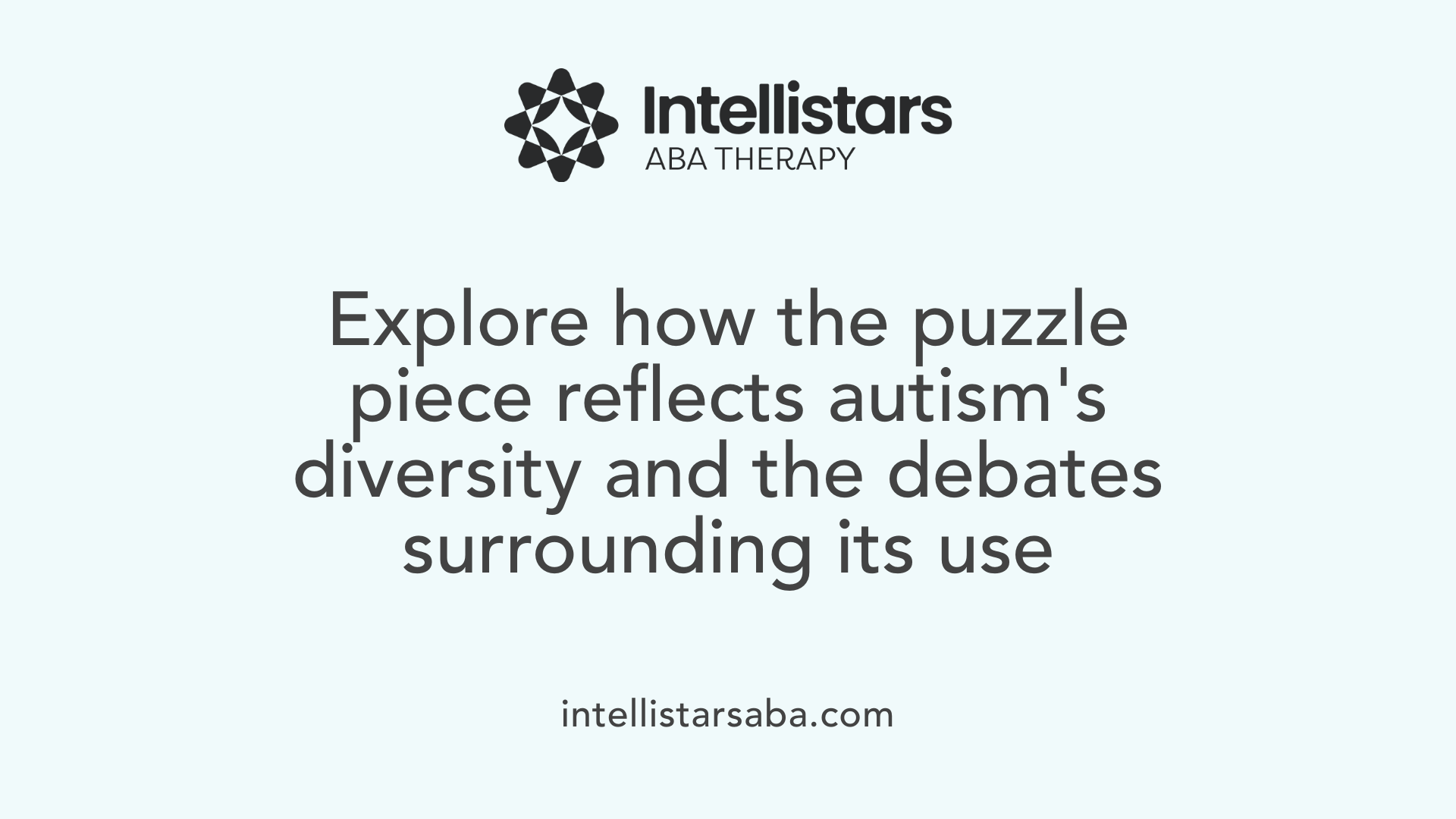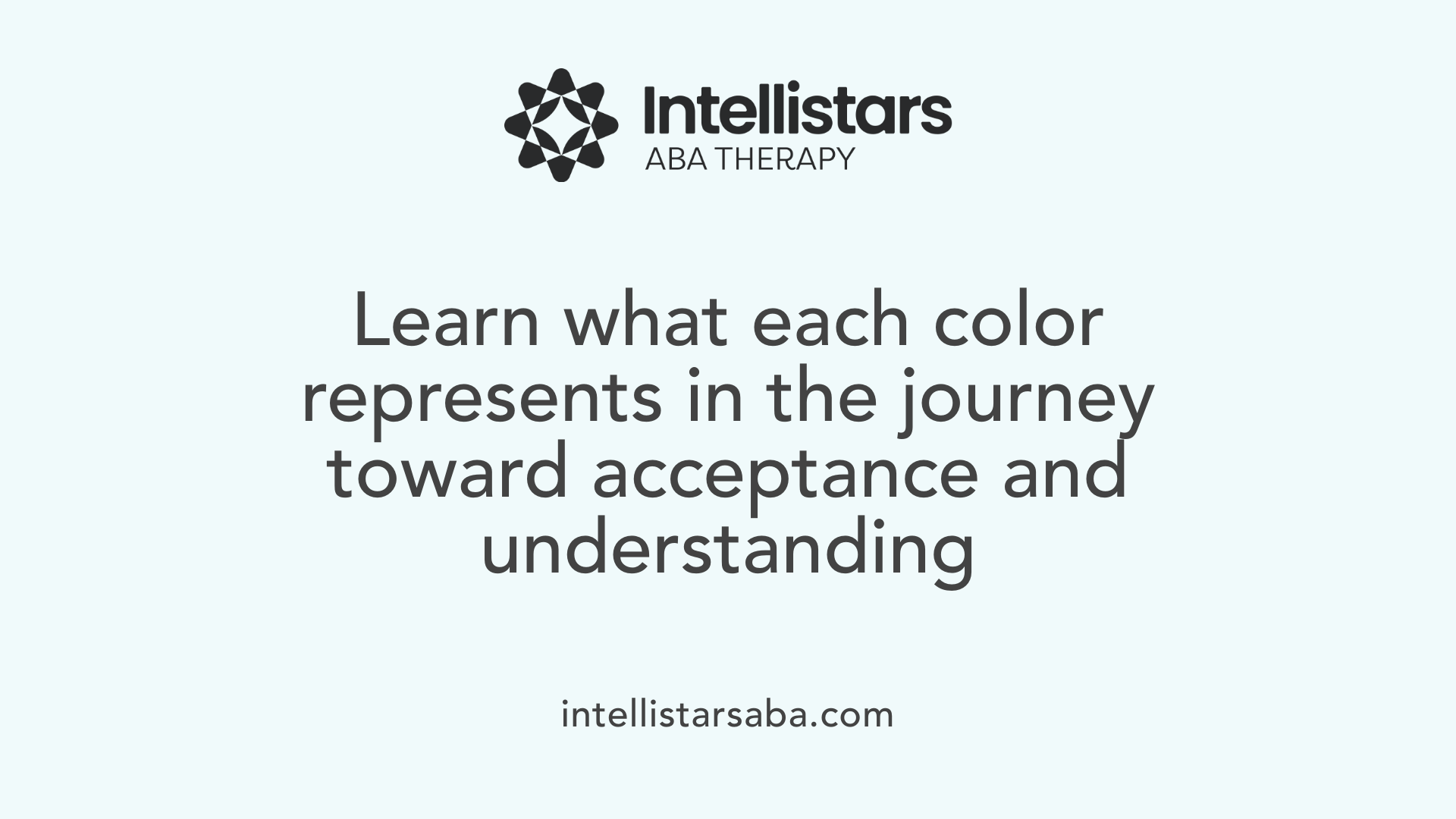Exploring the Symbols and Colors that Define Autism Awareness
Autism awareness campaigns have long used specific symbols and colors to foster understanding, acceptance, and diversity within the community. These visual representations serve as powerful tools to communicate complex ideas about neurodiversity, support, and inclusion. This article delves into the history, significance, and evolving meanings of autism symbols and colors, providing a comprehensive overview based on reputable sources.
The Iconic Puzzle Piece: Origin and Meaning

What is the most widely recognized symbol for autism and what does it represent?
The puzzle piece ribbon is the most identifiable symbol associated with autism. It features multiple interlocking pieces in bright, rainbow-like colors, symbolizing the complexity and diversity of the autism spectrum. This design was created by a group including autistic individuals and advocates to reflect the myriad aspects of autism, including the unknowns and the variability within the community.
The color blue has become strongly linked to autism awareness, especially through campaigns like 'Light It Up Blue,' which encourages supporters to wear blue on World Autism Awareness Day, April 2nd. The ribbon signifies hope and the interconnectedness of the autism community. Besides the puzzle piece, symbols like the rainbow infinity sign and butterflies are also used. The infinity symbol, often depicted with rainbow colors, emphasizes neurodiversity, endless potential, and acceptance.
While the puzzle piece is widely recognized, it has also been a source of controversy. Some individuals within the autism community feel that it suggests autism is a puzzle to be solved or a disease that needs curing. Others see it as a positive emblem representing the richness and diversity of autistic experiences.
What is the historical significance of the puzzle piece as a symbol for autism?
The puzzle piece was first introduced in 1963 by the National Autistic Society in the United Kingdom. Designed to symbolize the complexity and mystery surrounding autism, it was intended to highlight that each person with autism is a unique and integral piece of a larger picture.
This symbol gained international recognition through organizations such as Autism Speaks, which popularized it in the United States. Over the years, it has come to represent not only the challenges but also the diversity within the autism community. The puzzle piece was originally seen as a way to acknowledge that autism is a complex condition requiring understanding and support.
However, the symbol has faced criticism from some community members who argue that it implies autism is a problem to be fixed. This has spurred the adoption of alternative symbols like the rainbow infinity loop and butterflies, which emphasize acceptance, neurodiversity, and growth.
Further insights into autism symbols and their meanings:
| Symbol | Meaning | Origin/Usage | Additional Info |
|---|---|---|---|
| Puzzle Piece | Complexity, diversity | Created in 1963 by the National Autistic Society | Widely used but controversial within the community |
| Rainbow Infinity | Infinite potential, neurodiversity | First used at Autistic Pride Day in 2005 | Emphasizes ongoing acceptance and diversity |
| Butterfly | Transformation, diversity | Used as a symbol of growth and change | Represents beauty and individuality |
| Light It Up Blue | Awareness, acceptance | Campaign by Autism Speaks | Promotes awareness during World Autism Awareness Day |
| Gold | Acceptance, value | Used to symbolize societal acceptance | Represents inclusion and respect |
| Red | Strength, resilience | Symbolizes bravery and perseverance | Highlights ongoing struggles and courage |
| Yellow | Hope, positivity | Represents optimism about the future | Emphasizes brightness and potential |
| Green | Growth, hope | Signifies development | Often paired with campaign symbols |
These symbols collectively foster awareness and acceptance, reflecting the diverse perspectives and experiences within the autism community.
Colors of Autism: Significance and Symbolism

What color is most associated with autism awareness and what does it symbolize?
Blue holds the title as the primary hue linked to autism awareness. It has been popularized through dedicated campaigns like "Light It Up Blue," which occurs annually on World Autism Awareness Day (April 2nd). The color blue symbolizes support, calmness, acceptance, and understanding for individuals on the autism spectrum.
This shade is widely used in various awareness efforts to promote inclusion and foster a society that recognizes and respects diversity. The campaign by Autism Speaks, for example, uses blue lights at landmarks globally to draw attention to autism. Outside of awareness campaigns, blue also signifies efforts to enhance sensory environments, such as sensory-friendly parks and community spaces. Overall, blue is not only a color for acknowledgment but also a call for increased societal support and acceptance.
Additional colors and their meanings, including red, yellow, gold, and green
Colors beyond blue carry their own significance in autism awareness. Red is often associated with strength, resilience, and passion, celebrating the bravery of those with autism and highlighting ongoing needs for awareness.
Yellow symbolizes hope, joy, and positive futures. It reflects optimistic perspectives on early intervention, growth, and the potential within every individual.
Gold represents societal acceptance and inclusion. It signifies a desire for greater recognition of the contributions and rights of autistic individuals.
Green is linked with growth, renewal, and hope, emphasizing developmental progress and the ongoing journey of individuals with autism.
The rainbow spectrum and its representation of neurodiversity
The spectrum of colors in autism symbols, especially the rainbow, captures the vast diversity of abilities, experiences, and challenges faced by people on the autism spectrum.
The rainbow spectrum highlights neurodiversity—the idea that differences in brain function are normal variations of human experience, rather than deficits needing curing.
The rainbow’s blending of multiple colors signifies the range of diagnoses and individual strengths, celebrating uniqueness and fostering inclusive attitudes.
Symbols and Colors in Context
Among symbols, the puzzle piece was introduced in 1963 to represent the complexity and mystery of autism. However, it has faced criticism for implying that autism is a puzzle to be solved. Popular alternative symbols include the rainbow infinity sign, which emphasizes limitless potential and acceptance of neurodiversity.
Other symbols such as butterflies symbolize transformation and growth, with each butterfly unique, reflecting individual development.
In summary, colors like blue, red, yellow, gold, and green each portray different facets of the autism community, while the rainbow spectrum underscores the diversity and richness of experiences. Symbols evolve over time, moving from simplistic representations towards more inclusive and empowering imagery.
Evolution and Change of Autism Symbols
How has the symbolism of autism evolved over time?
The symbols associated with autism have experienced significant evolution, reflecting shifting societal perspectives. Initially, the most prominent symbol was the puzzle piece, which was introduced in 1963 by the National Autistic Society. This symbol aimed to represent the complexity, mystery, and diversity of autism.
As awareness and acceptance grew, there was a desire to move beyond notions of autism as a puzzle or a condition needing a cure. This led to the development of symbols emphasizing neurodiversity, acceptance, and positive representation.
In the early 2000s, the rainbow infinity symbol emerged, notably at Autistic Pride Day in 2005. Created by Judy Singer, this symbol highlights the limitless potential and diversity within the autism community. Its rainbow colors represent the broad spectrum of experiences, abilities, and challenges faced by autistic individuals.
Another influential symbol is the butterfly, which signifies growth, transformation, and the innate beauty of diversity. It depicts development and change, emphasizing the journey of autistic individuals and their unique pathways.
These newer symbols reflect a societal shift from curing autism to embracing and celebrating it as part of human diversity. The evolution signifies increased acceptance and respect for autistic identities, underlining that autism is a natural variation rather than a defect.
The Role of Symbols & Colors in Advocacy and Public Perception
What role do symbols and colors play in autism advocacy and awareness campaigns?
Symbols and colors are essential tools in autism advocacy because they provide quick, recognizable visual cues that help promote understanding, acceptance, and community connection. For example, the color blue has become closely associated with autism awareness, especially through the 'Light It Up Blue' campaign by Autism Speaks, launched to increase awareness on World Autism Awareness Day. This campaign uses blue lights and imagery to evoke feelings of calmness, trust, and inclusivity, making a lasting impression on the public.
The puzzle piece, introduced in 1963 by the National Autistic Society, is one of the most widely recognized autism symbols. It represents the complexity and diversity of autism, aiming to highlight that every individual is a unique piece of a larger community puzzle. Similarly, the infinity symbol, often seen in rainbow colors, emphasizes the endless possibilities and inclusiveness of the autism spectrum. It promotes a mindset of neurodiversity—acknowledging that autism is a natural variation within human diversity.
In addition to these, other symbols like butterflies and rainbow colors are used to communicate specific themes. Butterflies symbolize transformation, growth, and the beauty of diversity, reflecting the developmental journey of individuals with autism. The rainbow spectrum, with its multiple colors, celebrates the variety of experiences, abilities, and challenges faced by people on the spectrum.
Symbols in promoting inclusivity and acceptance
Symbols like the rainbow infinity sign serve to reinforce attitudes of acceptance and continual support for autistic individuals. Created around 2005, it encourages societal recognition that there is no single 'correct' way to be autistic, fostering a culture of understanding and respect.
Colors like yellow and gold are also significant—they represent hope, joy, and societal acceptance. Red signifies strength and resilience, honoring the bravery of those with autism and their families. Green is associated with growth and hope, emphasizing positive development and opportunities.
Like symbols, colors help to shape perceptions and foster a welcoming environment for autistic individuals. They appear in public awareness campaigns, educational resources, and community events, consistently promoting messages of inclusivity and celebration of neurodiversity.
Community debates and controversies
While symbols and colors are powerful in advocacy, some have sparked discussions and disagreements within the autism community. The puzzle piece, despite its recognition, has faced criticism for implying that autism is a puzzle or problem to be solved, which some interpret as stigmatizing or implying that autistic individuals are incomplete.
Some community members prefer alternative symbols like the rainbow infinity loop that emphasizes acceptance and diversity rather than deficiency. The butterfly symbol has gained popularity as a more positive representation of growth and individual differences.
Overall, the evolution of autism symbols reflects shifting societal attitudes—from a focus on 'curing' autism to embracing neurodiversity and inclusion. This ongoing dialogue highlights the importance of choosing symbols that respect the identities, experiences, and dignity of autistic people.
| Symbol | Description | Significance | Origin / First Use |
|---|---|---|---|
| Puzzle Piece | Recognized worldwide as an autism symbol, introduced in 1963 | Complexity and diversity of autism | 1963 by Gerald Gasson |
| Rainbow Infinity | Represents neurodiversity, positive possibilities, and ongoing awareness | Inclusivity and acceptance | 2005 at Autistic Pride Day |
| Butterfly | Signifies transformation, beauty, and diversity | Growth and individual development | Popularized later in community |
| Light It Up Blue | Campaign by Autism Speaks using blue lights to raise awareness on April 2nd | Calmness, trust, acceptance | 2010s by Autism Speaks |
| Colors (Yellow, Red, Gold, Green) | Various hues representing hope, strength, joy, and growth | Positive qualities and societal values | Community recognized |
How symbols and colors influence public perception
These visual representations foster a sense of unity and understanding. They make autism more visible and relatable, breaking down misconceptions and promoting acceptance. The continuous discussion around their meanings and implications encourages society to think critically about representation. Choosing symbols that are inclusive and respectful supports a more positive and accurate portrayal of the diversity within the autism community.
A Visual Journey Toward Understanding and Inclusion
The symbols and colors used in autism awareness are more than mere images; they encapsulate the community's history, hopes, and evolving understanding. From the puzzle piece's origins to the rainbow infinity symbol's embrace of neurodiversity, these icons shape public perceptions and foster a collective commitment to inclusion. While debates continue about the meanings and implications of certain symbols, their importance lies in sparking conversations, education, and ultimately, acceptance. As society moves forward, the continual evolution of autism symbols reflects a broader societal shift toward recognizing the value and diversity of all individuals on the spectrum. Recognizing and respecting these symbols can help create a more inclusive world where autism is understood not as a puzzle to be solved but as a vibrant part of human diversity.
References
- Symbols for Autism: What Do They Mean?
- Autism Colors & Symbols: What They Mean? - AutismCOE
- Understanding Autism Awareness Colors | Divine Steps ABA
- Understanding Autism Colors and Symbols - Childwise ABA
- Symbols For Autism: The Historical Evolution
- What Do the Autism Colors and Symbols Mean? - AngelSense
- Autism Awareness Colors & Symbols: Meanings and Evolution
- Autism Colors and Symbols - Golden Care Therapy






